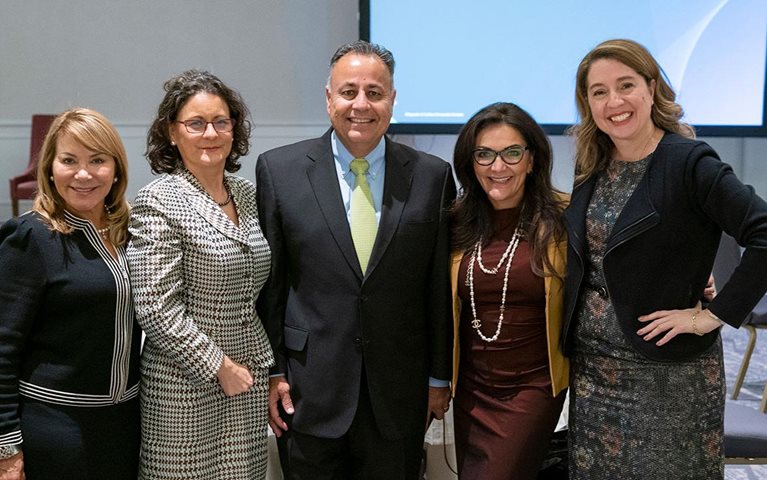“Entrepreneurship is in our blood,” says Ana Paula Calvo, a McKinsey engagement manager who is a Latina. She was born in Mexico City, but grew up between the US and Mexico.
Her grandmother always had a passion for baking and in 1990, started a bakery business in Mexico City. It started with ten employees, expanded to four locations, and her mother actually works there today. One close friend opened an environmental contracting firm in Florida, while another expanded a multi-generational family business in the US.
Entrepreneurship is also a recurring theme in McKinsey’s first comprehensive study of Latino economic mobility—The economic state of Latinos in America: The American dream deferred—which Ana led earlier this year. It analyzes the roles of Latinos as workers, savers, business owners, and consumers in the US economy.

Latinos are an economic engine for the US. They are the fastest growing minority: by 2030, 1 in 5 workers will be Latino. And they have the highest rate of entrepreneurship of any race: their businesses have grown by 12.5 percent over the past five years, compared to 5.3 percent for White-owned businesses.
“For many, when we come to the US, it’s to create a better life,” explains Ana. “And if building our own business is going to help us, then that's the path we’ll take.”
Ana’s colleagues on the research team could see this spirit playing out in their own lives. In a quick anecdotal survey, five Latino members of the team could identify some 15+ businesses started by their own families or close friends. They included a restaurant and catering business in Boston, a private equity firm in New York, and a media-and-events company in Miami, to name a few.
But our report also surfaced the challenges Latino entrepreneurs face in securing the capital they need to grow. They rely more on family savings, credit cards, and personal assets to start businesses, and they are less likely to apply for funding because they don’t think they will receive approval. Their businesses also tend to be underrepresented in higher growth industries, and many need to invest in a stronger digital presence, which is critical to grow.
“If we could close the gap so that the number of Latino businesses was in line with their share of the population, some 735,000 new businesses could be added to the US economy, supporting 6.6. million new jobs,” Ana points out.
One of the insights that surfaced in the research is the fact that any resources or programs focused on supporting economic mobility need to take into account the many differences among Latino populations, bucking the common misperception that they are a monolithic group. Distinctions among the population include whether they are US or foreign born and their country of origin.

The economic state of Latinos in America: The American dream deferred
“These nuances are reflected in the work they do, earning power, educational level, location, and political views,” says Ana. “For example, for Mexicans, the top occupational groups are farming, fishing, forestry, and construction. For Puerto Ricans, it’s transportation and the military. In terms of education, only 8 percent of Mexican-origin Latino immigrants have a bachelor’s degree or higher, compared to 27 percent of Cuban origin.”
Once a family emigrates to the US, in general, the first generation does well; the rates of intergenerational mobility and earnings are comparable to the White population. Latinos are willing to move or change jobs for advancement, and the share of Latinos stepping into higher paying industries has increased 5 percent over the past decade. But they are less likely to receive an inheritance; when they do it’s less by a factor of three than that of non-Latino White people. And almost a third are supporting families back home.
At McKinsey in the US, we have colleagues from countries and regions including Brazil, Mexico, the Caribbean, and Central and South America. “The Latino presence in our Miami office is very high, and I can feel an immediate point of connection within that community,” says Ana.
Her advice to a young Latino starting a career?
“Our overall outlook is positive, we do achieve upward mobility, and we are starting businesses. Be proud, and don’t forget where you and your family come from,” Ana says. “I spent most of my childhood in the US, but my parents always spoke to us in Spanish at home. When I moved back to Mexico City when I was fifteen, it was easy to immerse myself. It's a competitive advantage; we can connect easily to both non-Latinos and Latinos.”
